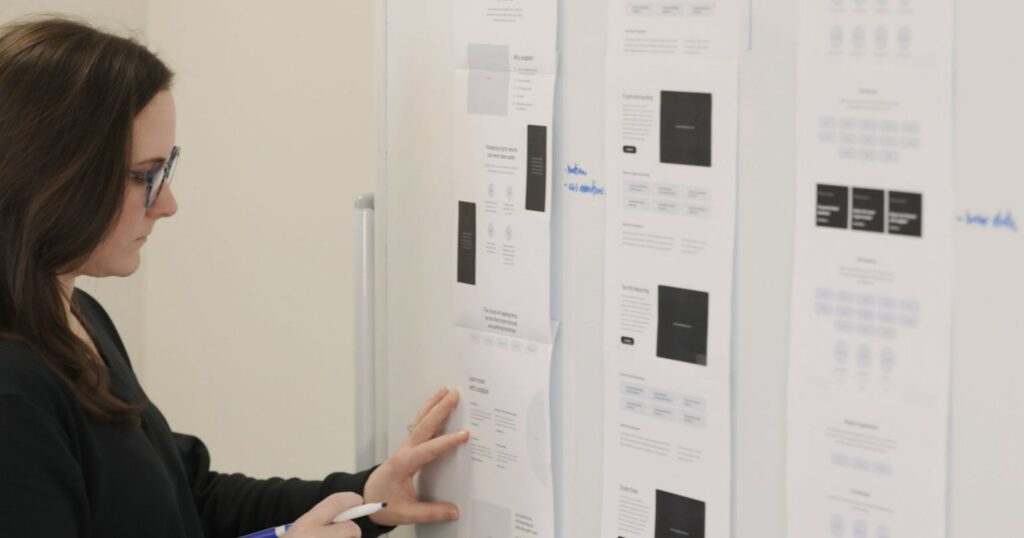
Picture this: you’re holding a spec sheet for the latest and greatest widget—the one that’s supposed to change everything—and yet no one outside the engineering team really understands what it does. It’s packed with acronyms, complex jargon, and technical specs that might as well be written in code. You know it’s brilliant, but the brilliance isn’t shining through. Instead of inspiring excitement, it’s sowing confusion. Why? Because complexity can be a silent deal-breaker, pushing potential fans right back out the door.
Because complexity has a bad habit of hiding in the dark corners of product features, specifications, and data dumps, and when complexity goes unchecked, it pushes your audience away. They might nod politely, feign interest, or scroll on by, never fully absorbing the genius behind your product. That’s why, for today’s marketers at tech start-ups and small tech companies, graphic design isn’t just a nice-to-have; it’s your secret weapon.
Design as a Translator, Not a Decoration
Too often, we treat graphic design as an afterthought. It’s the “make it pretty” stage. That’s a mistake. Design shouldn’t merely dress up your product—it should translate it. Good design, the kind that truly resonates, doesn’t just ornament your tech. It helps tell the story of why anyone should care in the first place.
Think about an infographic: a thoughtfully designed chart or simplified visual model can show, at a glance, what takes paragraphs of text to explain. Great designers aren’t adding adornments; they’re building bridges of understanding between the complex and the curious.
Turning Complexity into Connection
A complicated data model may be ingenious, but if it’s presented as a wall of code, it’s not doing its job. When you let design step in, something wonderful happens. You reduce friction. You cut through the clutter. You help people “see” what you’re talking about—literally. And once they see it, they can feel it, grasp it, and believe in it.
Simplicity in design is empathy in action. Your audience doesn’t want to wade through an instruction manual. They’re looking for clarity, for an aha moment. Graphics and visual storytelling can condense the distance between total confusion and true understanding. This isn’t about dumbing down the product; it’s about smoothing the path. Making it easier for someone to say, “I get it!”

Design Fuels Memorability and Trust
In a crowded tech landscape, trust and recall are currency. When a prospect first encounters your solution, they have little context. The right images, icons, and visual metaphors can anchor your product in their mind. Instead of a random name or a string of letters, they recall your distinctive imagery. They remember the feeling you invoked. They trust what they can understand, and design makes that understanding possible.
When you keep things consistent—colors, typography, layout—it’s not about brand police nitpicking over hex codes. Consistency is a visual promise. It tells your audience: “We’re here. We’re reliable. We know where we’re going.” Over time, this trust-building consistency matters more than you might think.
Elevate Every Touchpoint
Whether you’re designing a pitch deck, a landing page, an onboarding flow, or even a product demo, every touchpoint is a chance to clarify, to resonate, and to engage. A line graph that reveals a growth pattern. A set of icons that elegantly summarizes features. A visual metaphor that turns a complex data process into an understandable story. These design elements do the heavy lifting you can’t accomplish with words alone.
And here’s the thing: You don’t need a giant budget or an army of designers. Even small, thoughtful improvements—a cleaner font, a more intuitive layout, more white space—can have an outsized impact. Investing in design is investing in connection.
Putting It All Together
You have something remarkable. It’s a product that can solve real problems, delight customers, and maybe even change an industry. But if nobody understands it, it’s lost. Your job, as a marketer and a storyteller, is to gently guide your audience into the light.
That’s the role of great graphic design: not as garnish, but as a powerful narrative tool. The better you leverage it, the easier it becomes for others to see the value you worked so hard to create. Instead of complexity pushing people away, design helps invite them in.
So take that next big presentation, landing page, or marketing email and ask yourself: Is the design helping me tell the story? Is it clearing the path or cluttering it? When you embrace design as an ally, you give your message a fighting chance—and your brilliant product a well-deserved spotlight.
If you’re ready to transform complexity into clarity, The Grove Creative can help. Our team specializes in turning intricate features and data into compelling, accessible visuals that resonate with your audience. Let’s collaborate to shine a spotlight on your product’s true value. Get in touch with us today and let’s make your story impossible to ignore.